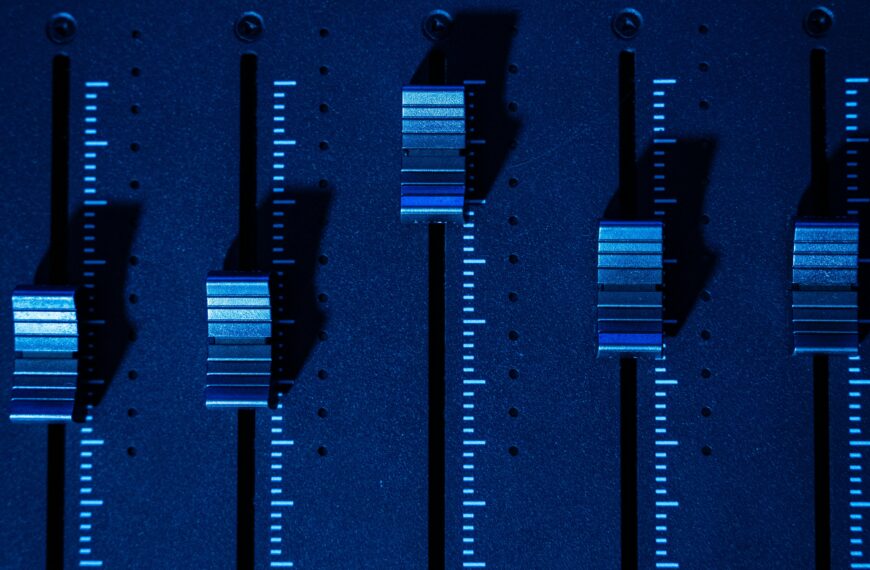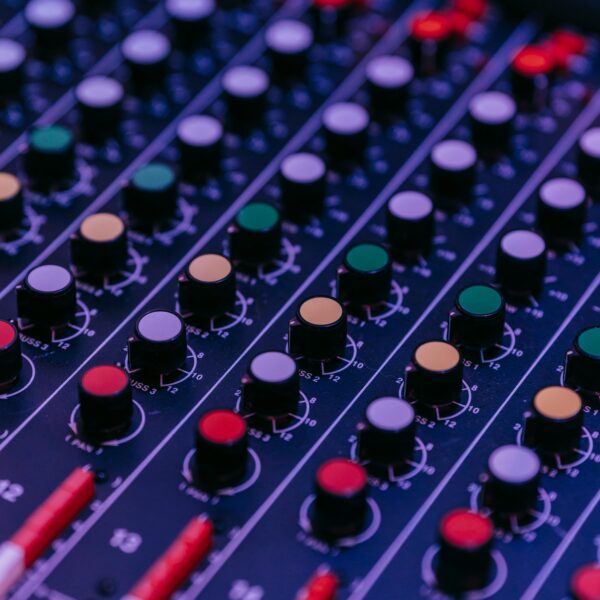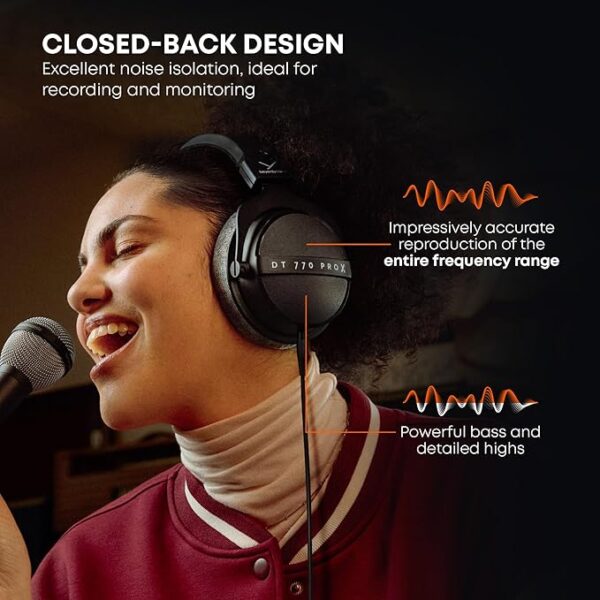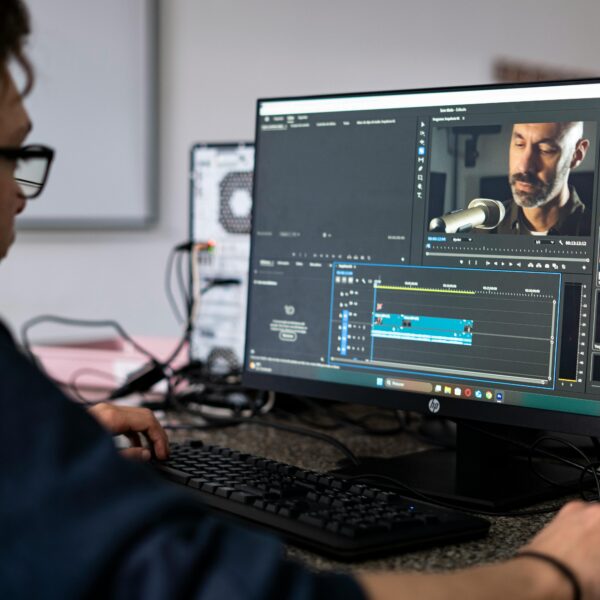Shure’s been consistently synonymous with quality and innovation. With the release of their latest offering, the Shure MV7+, they have once caught up hype. In this review, we’ll get ourselves to know about the features, design, performance, and overall value of the MV7+ to determine if it truly stands out as the microphone we all want or or not.
What do you get after unboxing Shure MV7+?
After opening the package, you will see the familiar sight of quality packaging. Inside, nestled snugly, lies the Shure MV7 Plus, with some essential accessories. A glance reveals the inclusion of a USB-C cable, a welcome departure from the micro USB connection of its predecessor, promising enhanced durability.
- Shure MV7+ Podcast XLR/USB Microphone (Black)
- USB-C Cable (9.8′)
- 3/8 to 5/8″ Adapter
- Limited 2-Year Manufacturer Warranty
A Closer Look at the Shure MV7+ Design
If you’re chasing rich, studio-quality sound with minimal setup.
The Shure MV7+ Podcast Microphone blends the broadcast-level tone of a dynamic mic with next-gen convenience, and I’ve personally used it to record interviews in my echo-prone living room — it held up shockingly well. 🤯
Now, is it just a dressed-up MV7? Not even close. The “+” upgrade feels like a full refresh.
I was especially hooked by the new customizable full-color LED touch panel — finally, a visual feedback system I don’t have to squint at.
You can tweak volume or mute instantly, and yes, it adds a futuristic glow to your desk setup (super aesthetic for streamers 🎮 or creators who film their setups).
🔌 Can it connect to both pro setups and laptops?
Absolutely. It’s got dual USB-C and XLR outputs — a huge win for versatility.
I tested it with my Zoom H6 via XLR and then flipped to USB-C for my MacBook; no hiccups. You’re ready whether you’re in the studio or just Zoom-recording a solo podcast.
🔊 How does it sound?
It sounds deep, full, and clear, especially in the midrange. But here’s a hot take — I still think the preamp could use a gain bump.
My voice isn’t exactly whispery, but I still had to tweak the gain up on softer sections. So while it’s better than the original MV7, it’s not a replacement for a high-end interface or Cloudlifter if you’re super quiet.
🔥 What’s new and unique?
Here’s where the MV7+ breaks ground: it now offers built-in reverb with 3 settings. If you record solo or narrate audiobooks like I do occasionally, this gives your voice that extra cinematic space — no plugins required.
According to Shure’s release notes, this is part of their next-gen DSP suite, which also includes real-time EQ and compression, all accessible via their revamped MOTIV Mix software.
🎚️ Is the software actually useful?
Very. MOTIV Mix is crazy intuitive now. I loved the one-click presets like “Podcast” and “Live Stream,” but you can still deep-dive into compression ratios, high-pass filters, and even multiband EQ.
It feels like they’ve packed a full DAW-grade toolbox into a mic utility. For beginners, it’s a godsend. For veterans, it’s time-saving.
📉 Any downsides?
The price is steep (~$300) considering mics like the Elgato Wave:3 ($150) or RØDE NT-USB+ ($170) offer USB-C, DSP, and great sound for less.
But neither gives you the dual-output flexibility, the real-time LED panel, or onboard reverb — so if those matter to you (they did for me as I switch between gear often), it’s worth the premium.
🎯 Verdict?
If you’re serious about podcasting or content creation and want pro features in a plug-and-play form, the Shure MV7+ is one of the best USB/XLR mics out there. It’s not perfect — you’ll want a pop filter (the included foam is just okay), and soft speakers might still need a gain boost — but for the feature set, it’s a standout.
🧠 Bonus stat: According to The Podcast Host, 60% of creators now prefer USB/XLR hybrid mics for flexibility — and this one nails that demand. (source)
Want visuals to support this? I can whip up a comparison chart between MV7+, RØDE NT-USB+, and Elgato Wave:3 if you’d like 📊
See all the technical features of the microphone in their website.
At time of writing, the Shure MV7+ comes in at $279 on Amazon, which is competitive against other hybrid USB-XLR microphones. It’s also £279 on Amazon UK.

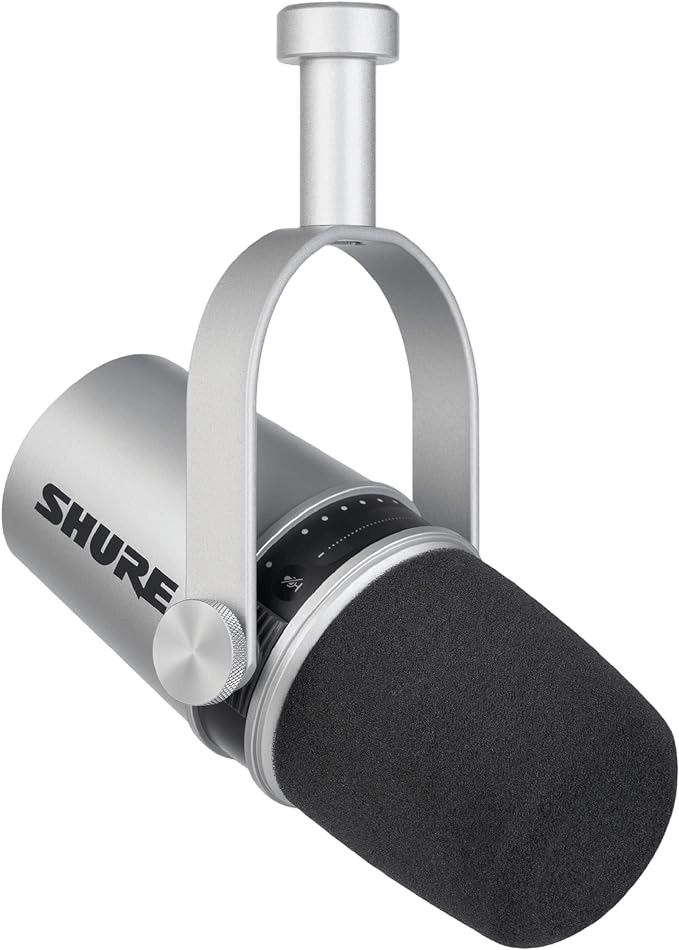
What’s New in Shure MV7+?
- The multicolor LED touch panel adds stunning color to your sound. Choose from 16.8 million colors and use it as an audio level meter, or turn on the eye-catching pulse effect. Don’t want a constantly heated microphone? Simply tap anywhere on the LED panel to instantly mute the MV7+.
- Real-time Denoiser: cutting-edge DSP technology removes ambient noise in your environment and works alongside the mic’s Voice Isolation Technology to ensure you sound amazing even in poor recording settings.
- Digital Popper Stopper: a virtual pop filter reduces harsh plosive noises, allowing you to avoid acoustic distractions on audio tracks and a physical pop filter on camera while filming.
- Enhanced Auto-Level mode optimizes audio levels by adjusting mic gain based on distance, volume, and spatial detection.
- Onboard Reverb: Three types of onboard reverb settings (Plate, Hall, and Studio) increase the depth and beauty of music recordings.
- Hybrid XLR and USB-C outputs: the dual options allow for seamless connectivity regardless of the recording arrangement being used. The MV7’s micro-USB connector has been converted to the MV7+’s USB-C connector.
- MOTIV Mix integration: MOTIV Mix software unlocks strong onboard DSP functionality in every MV7+ via USB-C output. Configure and set up your microphone to personalize the colorful LED touch panel and adjust mic settings such as sound signature, gain, EQ, compressor, limiter, and more. Save presets to quickly recall settings.
Build Quality and Design
The materials are premium and, it exudes a sense of solidity and durability. While the design remains largely unchanged from the original MV7, subtle updates abound. Gone are the touch controls, replaced by a sleek RGB light bar that adds a touch of personalization without overwhelming the aesthetics.
Enhanced Features
The Shure MV7+ is the answer if you want studio-quality sound without needing a degree in audio engineering. I’ve used the original MV7 for over a year, and the new MV7+ in matte black? It doesn’t just look sleeker—it performs smarter.
🔌 Quick answer:
Yes, the Shure MV7+ is worth it for creators who need pro-grade sound + plug-and-play convenience.
🎧 So what actually makes it better?
At its core, it’s still a dynamic broadcast-style mic, which is perfect for blocking out background noise. That alone helped me when recording in my echoey office—no padding, no sound booth, and it still sounds 🔥. But the real upgrades start with its dual output: USB-C and XLR, so you can go straight into your computer or hook it into a high-end audio interface without needing a converter or extra gear.
🌈 And yes—the LED touch panel.
This one’s not just for show. It gives you a real-time audio level monitor, plus haptic volume control that actually works. It’s one of those features you never knew you needed until you’re adjusting levels mid-stream without peeking at your DAW.
🎚️ Built-in DSP? Game-changer.
The mic now includes three reverb options, automatic gain control, compression, and EQ tweaks—all handled right in the mic or in Shure’s revamped MOTIV Mix software. The app lets you fine-tune everything, and it’s beginner-friendly. Like, I handed it to a friend who never touched a DAW before and he was recording pro-level vocals in 15 minutes.
📉 But not all is perfect…
The built-in preamp still isn’t super strong. If your voice is naturally soft like mine, you’ll probably crank the gain close to max, especially on XLR. Also, the $299 price tag puts it up against mics like the Elgato Wave:3 ($149) and RØDE NT-USB+ ($169), which offer great sound and built-in DSP at a lower price. You’re paying more for versatility and polish—but you need to actually use those features to justify it.
📊 Did you know?
Podcast listeners will bounce if audio quality is poor—according to Edison Research, over 65% of podcast fans said they won’t finish an episode if the audio is bad (source). That stat alone convinced me to upgrade.
🎯 Who’s it for?
If you’re a podcaster, YouTuber, streamer, or voice-over artist, and you want plug-and-play simplicity with the freedom to grow into a pro setup, this mic hits the sweet spot. It feels like Shure finally nailed that hybrid between entry-level convenience and studio-level control.
💬 My final take?
The Shure MV7+ isn’t a massive leap from the original MV7—but it’s a smart, thoughtful evolution. The LED screen, deeper DSP, and USB-C/XLR flexibility make it a top-tier mic for creators who are ready to level up. Sure, it’s not the cheapest, but it’s probably the most future-proof in its class. 🎙️
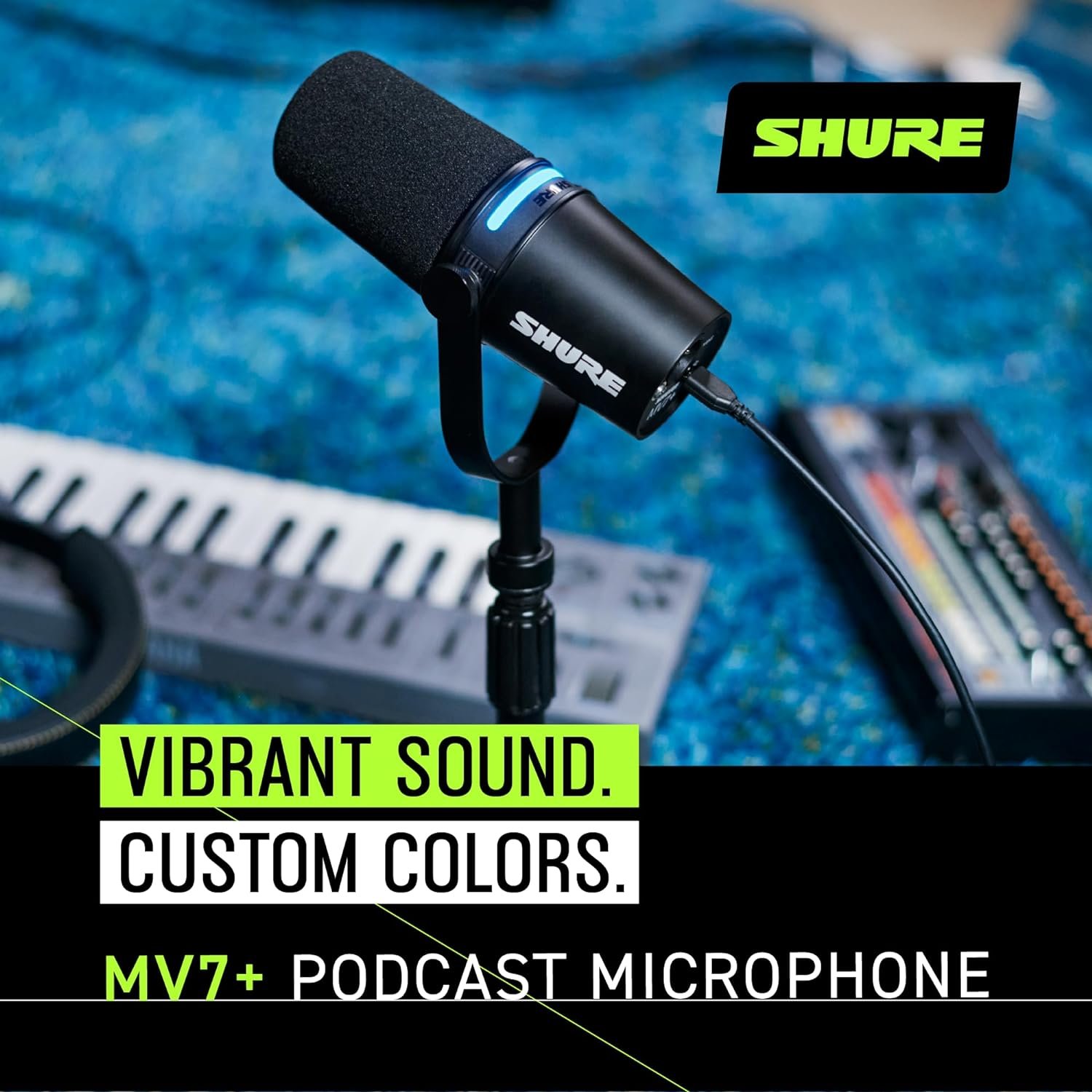
Performance: Audio Quality and Features
Looking for a versatile microphone that nails everything from podcasting to gaming to Zoom calls?
The Shure MV7+ is built on the legendary bones of the SM7B, but with modern upgrades that actually make life easier—like its Auto Level feature that auto-magically handles gain and compression so you don’t have to.
As someone who’s tested dozens of mics, I love when the tech helps me sound pro without hours of tweaking. 💡
Now, what blew me away is how the MV7+ uses spatial detection technology—yep, it actually senses where your voice is coming from.
That translates into cleaner, clearer recordings, especially useful when I’m narrating voiceovers at night and trying not to wake anyone.
Even while gaming with friends over Discord, this thing keeps my voice rich and detailed without picking up every keyboard click or my dog barking in the background 🐶.
How Does the MV7+ Actually Perform?
I threw this mic into the wild: late-night podcasting, morning Zoom calls, Twitch streaming, you name it.
Every time, the audio was punchy, full-bodied, and surprisingly warm—even over USB-C. The DSP (digital signal processing) upgrade over the original MV7 is no joke.
Shure’s internal tests found the MV7+ has a wider frequency response, especially in the lower mids and highs, which gives vocals more texture and presence (source: Shure.com).
I definitely felt that difference when switching from my older Samson Q9U.
🎧 Here’s what sets it apart: dual output.
I ran it through both XLR and USB-C, and while USB is super convenient (great for on-the-go recording with just my MacBook), the XLR side truly shines when plugged into my Focusrite Scarlett 2i2.
That combo gave me the warmth and depth I’d expect from studio sessions. But heads-up: the built-in preamp is just okay.
For softer voices, you might still need a gain booster like a FetHead or Cloudlifter, which is kind of a Shure tradition 😅.
Any Downsides You Should Know?
Oh yeah—while I appreciate the cool LED touch panel, it’s a bit too touchy.
Once, while adjusting my boom arm, I accidentally brushed it and changed my gain mid-recording 😐.
Also, no getting around this: USB mode still can’t match the tonal richness of a full XLR chain.
If you’re expecting SM7B warmth via USB alone, temper those expectations.
Final Take: Who Should Buy the Shure MV7+?
If you’re a podcaster, streamer, or remote worker who wants studio-level audio without the studio-level complexity, this mic hits the sweet spot. It adapts to wherever you’re at in your content journey. I’ve even recommended it to beginner creators because it’s that easy to use—and it grows with you as you upgrade your gear.
🔍 So… is the Shure MV7+ worth it?
Yes—if you want a smart, flexible mic that sounds great out of the box, especially over USB, and even better with XLR.
But don’t expect miracles from the preamp, and give the LED panel some space. Other than that? It’s become my go-to when I want to record without fiddling endlessly with knobs.🎙️
Sound Quality
The microphone’s shape and sound are inspired by the Shure SM7B, a popular choice for podcasts and radio broadcasts.
When you place the microphone close to your voice, it produces clear, comprehensible, and high-quality sound.
The frequency response is tuned for rich, natural vocal reproduction.
The MV7+ is also ideal for vocalists and musicians, with a frequency response ranging from 50 Hz to 16 kHz and SPLs of up to 128 dB.
In manual mode, the MV7 Plus delivers natural and nuanced audio reproduction.
However, to achieve optimal results, you will require mindful positioning, with Shure recommending proximity to minimize ambient interference.
Furthermore, the inclusion of a high-pass filter and reverb settings adds another layer of customization allows users to tailor their sound to perfection.
Shure markets the mic primarily to podcasters, so, first connected it to a Mac via USB. Record using Shure’s Motiv Mix software, Audacity, and Garageband.
Shure’s app provides access to all mic digital capabilities, including EQ, reverb, and high-pass filter.
Once you’ve set your digital settings, they carry over to other apps. You can test the mic with an iPhone or an iPad Pro.

(Credit: Eric Zeman)
Testing Shure MV7+
In this review, I’ll put the Shure MV7+ through my microphone testing regimen while comparing it to the original. Read on to find out how the Shure MV7+ performs with the:
- Auto-Level test
- Plosives test
- De-noise test
Auto Gain
Except for the compressor test, all of my recordings using the auto gain feature of the MV7+ outputted healthy recording levels of -24LUFS, and a true peak of -4dBFS. That’s the perfect sweet spot for a raw recording!
Plosives
I believe microphone manufactures’ marketing teams are beginning to recognize that a foam sock/built-in pop filter is not a true pop filter. There is no mention of Shure’s built-in pop filter for the MV7+. What they did was add a “Popper Stopper” DSP capability to the Shure Mix program.
There are definitely popping plosives with the Popper Stopper disabled. When I turned on the Popper Stopper, the plosives subsided dramatically. I was a little apprehensive about how well this function would work, but it appears to operate very well. Well done, Team Shure!
Noise Reduction
Because it is a dynamic microphone, the MV7+ automatically protects itself from ambient recording conditions. However, I discovered that its noise rejection without any de-noise was quite good.
I recorded this test with a ceiling fan set to high, and the image above was enhanced to -16LUFS. The noise in the recording was still manageable, especially given the continual speech. The darkening in the preceding image indicates that noise reduction is enabled. I didn’t notice any tone harm from noise reduction. People with less-than-ideal recording environments may have more flexibility with the MV7+. However, this does not mean you should record with your window open or music playing in the background!
Shure MV7+ Motiv Apps Experience
Shure offers a variety of apps for the MV7+. Download the Shure Motiv Mix app for macOS and Windows. If you intend to use an Android or iOS smartphone, you’ll need the Shure Motiv Audio and Motiv Video applications.
The Motiv Mix desktop application has two primary roles. It functions as both an MV7+ management tool and a competent multichannel recording platform, allowing you to simply integrate all of your input sources. The software is currently in beta, and certain functions aren’t working yet, but it does what you’d expect. Shure claims that an update will include the missing features in the near future.
You may adjust the gain (automatic or manual), monitor (mic or PC), tone (dark, natural, or bright), reverb (studio, plate, or hall), and high-pass filter (off, 75Hz, or 150Hz). Finally, you can adjust the LED panel on the microphone. Aside from handling the microphone, the program allows you to specify recording options such as bit rate, frequency, and file type (AAC, FLAC, or WAV). I like how you can keep multiple presets for different recording conditions. Motiv Mix lets you to add several channels, but the output is currently mono, even when recording from many sources.

(Credit: Shure)
The Motiv Audio mobile app mimics the most of these controls. While my Mac recognized the MV7+ instantly after connecting it in, both Android and iOS devices required me to install and open the Motiv Audio app before they recognized the microphone. The Motiv Video app allows you to record videos with the microphone.
It’s worth noting that none of these software options apply to the MV7+ when it’s connected to analog audio equipment via XLR. In that case, it sends a clean, unadulterated signal to your capture device.
Final Thoughts and Verdict: Is the Shure MV7+ Worth It?
In conclusion, I’d say the Shure MV7+ has been always a choice in the competitive landscape of microphones. With its sleek design, exceptional audio quality, and innovative features, it will offer a wide range of applications. You’re a content creator, musician, or live streamer whatever, the MV7+ will deliver its performance with ease.
I see the Shure Mix software’s potential with the virtual routing it provides. Hopefully, after the kinks are worked out, it will provide a more enjoyable experience.
Currently, there is no support for mobile devices such as smartphones and tablets, as there was with the original MV7. I believe this is a step backwards, but possibly it will be introduced in the future. I’ve suggested the original MV7 to a number of clients because to its mobile support. Some folks are simply not computer smart, and they found it easier to accomplish everything with a mobile app while learning podcasting from the ground up.
So, if you’re ready to elevate your audio to the next level, look no further than the Shure MV7+. With its blend of style, performance, and convenience, it’s more than just a microphone – it’s your ultimate audio companion.

Conclusion
The most significant difference with the MV7+ is the use of new software to control it. The tonal profiles and noise reduction functions are slightly improved over the original program. The absence of mobile support is currently a bit disappointing. But With its design, superior performance, and integration with the Motiv Mix app, it offers a nice solution for all your audio needs. So, Say goodbye to compromises and hello to the insane microphone experience with the Shure MV7+.
Into Podcasting? Podcasting is a different game, and without a precise blueprint, the game will get tougher midway. Grow your podcast from scratch with Zero Audience and learn about how successful podcasters cracked the code by winning our Free Guide with step by step Guidelines.
Get your complete podcast equipment setup by visiting Podcast Equipment Bundle. Get in touch with podcasting services and experts those will save you tons of time at Podcast Production Services.
With that being said, Let’s connect with all such free and paid tool/services you might need knowingly or unknowingly to fuel your growth. Here’s 21 BEST AI TOOLS AND PLATFORMS TO GROW YOUR PODCAST AND CONTENTS. There are some bonus tools in the end too to make your day to day life easier.
There are some affiliate links on this page that will redirect you directly to the original products and services. Also by buying through those links you will be supporting us. So thank you ^.^
